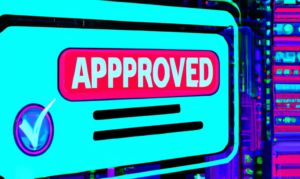Seller concessions and interested party contributions (IPCs) play a significant role in residential real estate transactions. They often making the difference in closing deals or easing the financial burden on homebuyers. This comprehensive guide delves into the intricacies of seller concessions and IPCs, discussing their various types, limitations, and key implications.
What are Seller Concessions in Residential Real Estate Transactions?
Seller concessions refer to voluntary agreements where property sellers offer to pay specific costs or fees on behalf of the buyer. By reducing the financial burden on buyers, seller concessions can make properties more appealing or facilitate the closing process. These concessions are typically negotiated during the offer and counteroffer stages of the home buying process.
Types of Seller Concessions Allowed
Common types of seller concessions include:
- Closing costs: These closing costs encompass loan origination fees, title insurance, appraisal fees, attorney fees, and other related expenses.
- Discount points: Sellers may pay upfront fees to the lender to reduce the mortgage’s interest rate, making the loan more affordable for the buyer.
- Home repairs or improvements: Sellers may agree to complete necessary repairs or provide a credit to the buyer to cover the costs of such repairs or improvements.
- Home warranties: Sellers may provide a service contract that covers the repair or replacement of major home systems and appliances for a specific period, typically one year.
- Prepaid expenses: Sellers may cover some of the buyer’s prepaid expenses, such as property taxes, homeowners’ insurance, or homeowner association (HOA) dues.
Limits on Seller Concessions
The limits on seller concessions depend on the type of mortgage loan and other factors, such as the borrower’s credit score, down payment size, and debt-to-income ratio. Here’s a breakdown of seller concession limits for various loan types:
Conventional Loans (Fannie Mae and Freddie Mac)
- If the down payment is less than 10% of the property’s value, the seller concession limit is 3% of the property’s sales price.
- If the down payment is between 10% and 25% of the property’s value, the seller concession limit is 6% of the property’s sales price.
- If the down payment is more than 25% of the property’s value, the seller concession limit is 9% of the property’s sales price.
FHA Loans
- For FHA loans, the seller concession limit is generally capped at 6% of the property’s sales price.
VA Loans
- The seller concession limit for VA loans is 4% of the property’s sales price. However, this limit does not include specific fees that the VA allows the seller to pay on behalf of the buyer, such as the VA funding fee.
USDA Loans
- The seller concession limit for USDA loans is typically capped at 6% of the property’s sales price.
These limits ensure that sellers do not provide excessive financial assistance to buyers, which could artificially inflate property prices and jeopardize the mortgage approval process. Keep in mind that individual lenders may have their own restrictions or requirements, and these limits are based on federal guidelines.
It is important to consult with your lender and real estate agent to ensure you are aware of the specific seller concession limits and requirements applicable to your transaction. Exceeding these limits could lead to complications, such as the need to renegotiate the terms or even jeopardize the mortgage approval process.
Types of Seller Concessions That Are NOT Allowed
Seller concessions cannot be used to cover the buyer’s down payment or earnest money deposit, as these funds should come directly from the buyer.
What are Interested Party Contributions (IPCs)?
IPCs are financial contributions from parties with a vested interest in the real estate transaction, such as the seller, builder, developer, or real estate agent. Seller concessions fall under the category of IPCs.
Types of Mortgage Loans Where IPC’s Are Allowed
IPCs are allowed for various mortgage loan types, including:
- Conventional loans
- FHA loans
- VA loans
- USDA loans
What are the Limits of Ability to Use IPC’s?
The limits of ability to use Interested Party Contributions (IPCs) vary depending on the type of mortgage loan and the down payment size. Here is a breakdown of IPC limits for various loan types:
Conventional Loans (Fannie Mae and Freddie Mac)
- If the down payment is less than 10% of the property’s value, the IPC limit is 3% of the property’s sales price.
- If the down payment is between 10% and 25% of the property’s value, the IPC limit is 6% of the property’s sales price.
- If the down payment is more than 25% of the property’s value, the IPC limit is 9% of the property’s sales price
FHA Loans
- The IPC limit for FHA loans is generally capped at 6% of the property’s sales price.
VA Loans
- For VA loans, the IPC limit is generally 4% of the property’s sales price. However, this limit does not include specific fees that the VA allows the seller to pay on behalf of the buyer, such as the VA funding fee
USDA Loans
- The IPC limit for USDA loans is typically capped at 6% of the property’s sales price.
It is important to note that these limits are based on federal guidelines, and individual lenders may have their own restrictions or requirements. Furthermore, exceeding the allowable IPC limits could result in the lender requiring the excess amount to be returned to the interested party or applied to non-loan-related costs, which may complicate the transaction. It is always recommended to consult with your lender and real estate agent to ensure you are aware of the specific IPC limits and requirements applicable to your transaction.
Are Seller Concessions and IPCs Different for Each State?
Limits and guidelines for seller concessions and IPCs are primarily based on federal lending guidelines and generally consistent across the United States. With that said, individual lenders or real estate professionals may have their own requirements under unique and uncommon circumstances. It is crucial to consult with them for accurate and up-to-date information.
The Organizations That Create, Review, Set Limits, and Implement Changes Regarding Seller Concessions and Interested Party Contributions
Organizations responsible for setting and reviewing limits and guidelines for seller concessions and IPCs include:
- The Federal Housing Administration (FHA) for FHA loans
- The U.S. Department of Veterans Affairs (VA) for VA loans
- The U.S. Department of Agriculture (USDA) for USDA loans
- Fannie Mae (FNMA) and Freddie Mac (FMAC) for conventional loans
The Role of Real Estate Agents in Seller Concessions and IPC’s
Real estate agents play a crucial role in negotiating seller concessions and IPCs. They can advise both buyers and sellers on the most appropriate concessions for specific transactions, considering factors like market conditions, property condition, and the buyer’s financial situation. Real estate agents also ensure that the concessions adhere to the applicable lending guidelines and do not jeopardize the mortgage approval process.
Seller Concessions and IPC’s in Competitive Markets
In competitive markets where multiple buyers may be vying for the same property, seller concessions and IPCs can become essential tools to make an offer stand out. Buyers may request concessions to reduce their out-of-pocket expenses, while sellers may proactively offer them to attract more bids or expedite the sale. Real estate agents can help both parties navigate these competitive situations and devise strategies that align with their respective goals and needs.
Potential Drawbacks of Seller Concessions and IPC’s
While seller concessions and IPCs can be beneficial in many situations, they may also have some drawbacks. For instance, if a seller agrees to pay too much in concessions, they may end up receiving less profit from the sale. Additionally, if the concessions exceed the allowable limits, they may need to be returned to the interested party or applied to non-loan-related costs, potentially complicating the transaction. Buyers should also be aware that accepting excessive concessions may lead to a higher purchase price, potentially impacting the home’s appraised value and their loan approval.
Negotiating Seller Concessions and IPC’s
Negotiating seller concessions and IPCs requires a clear understanding of the local real estate market, the buyer’s financial situation, and the seller’s motivations. Here’s a step-by-step example of how the negotiation process might unfold, using a simple example:
Step 1: Buyer’s financial assessment
Let’s say a buyer, Jane, is interested in purchasing a house listed for $300,000. She has saved up $30,000 for a down payment (10% of the sales price) but is concerned about additional costs, such as closing costs and moving expenses.
Step 2: Seller’s motivations
The seller, John, is motivated to sell the house quickly, as he has already purchased a new home and is eager to avoid paying two mortgages.
Step 3: Real estate agent’s research
Jane’s real estate agent researches the local market and finds that houses in the area typically sell within 45 days. John’s house has been on the market for 30 days, which suggests that there might be room for negotiation.
Step 4: Initial offer and concession requests
Jane makes an initial offer of $290,000 and requests that John contributes $6,000 (2% of the offered price) towards her closing costs as a seller concession. She also asks for a $2,000 credit for necessary repairs as an IPC, which will be deducted from the sales price.
Step 5: Counteroffer and negotiation
John counters with an offer of $295,000 and agrees to contribute $4,000 (1.35% of the counter-offered price) towards Jane’s closing costs. However, he is not willing to offer a credit for repairs.
Step 6: Final agreement
After further negotiation, Jane and John agree on a final sales price of $293,000, with John contributing $5,000 (1.7% of the final sales price) towards Jane’s closing costs and a $1,000 credit for repairs.
In this example, both parties were able to reach a mutually beneficial agreement that met their respective goals. Jane received financial assistance to help with closing costs and repairs, while John was able to sell his house relatively quickly. Working with an experienced real estate agent can provide valuable insights and guidance throughout the negotiation process, helping both buyers and sellers achieve their desired outcomes.
Tax Implications of Seller Concessions and IPC’s
Seller concessions and IPCs may have tax implications for both buyers and sellers. Let’s explore a simple example to better understand the potential tax consequences:
Example Scenario:
Buyer, Jane, purchases a house for $300,000 from Seller, John. They agree that John will pay $6,000 in seller concessions towards Jane’s closing costs and provide a $3,000 credit for necessary repairs (an IPC).
Tax Implications for Jane (Buyer):
- Deducting Discount Points: If John had paid discount points on Jane’s behalf to lower her mortgage interest rate, Jane could potentially deduct those points on her federal income tax return. However, in this example, the seller concessions went towards closing costs, not discount points, so Jane cannot deduct the $6,000 from her taxes.
- Capital Improvements: The $3,000 repair credit (IPC) Jane received could potentially be considered a capital improvement. If Jane later sells the house, she can add the $3,000 to her home’s cost basis, effectively reducing her potential capital gains tax liability.
Tax Implications for John (Seller):
- Selling Expenses: In some cases, sellers may be able to deduct certain seller concessions from their taxes as selling expenses. However, it is essential to consult with a tax professional to determine which concessions, if any, can be considered selling expenses.
- Capital Gains: John’s cost basis in the house will not be affected by the $6,000 seller concessions or the $3,000 IPC. However, he will need to report the $300,000 sales price as the gross proceeds from the sale. His capital gains tax liability will be based on the difference between the sales price and his adjusted cost basis in the property, which includes the original purchase price, closing costs, and any capital improvements made during ownership.
Both Jane and John should consult with tax professionals to ensure they fully understand the tax implications of the seller concessions and IPCs in their specific transaction. Tax laws and regulations are complex and subject to change, and it is essential to obtain accurate, up-to-date advice tailored to individual circumstances.
In Closing
Seller concessions and interested party contributions play a crucial role in residential real estate transactions, often making the difference in closing deals or easing the financial burden on homebuyers. A thorough understanding of the types of concessions and IPCs, their limitations, and key implications can empower buyers and sellers to navigate the home buying process more efficiently. By staying informed and working with experienced real estate professionals, both parties can achieve their respective goals and ensure a smooth transaction.






